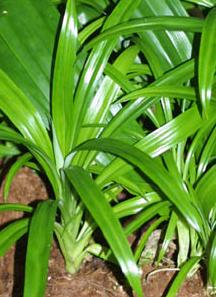
SCREWPINE LEAVES
My late father suffered from end stage renal failure and had to go for dialysis three times a week before his death. He had also suffered from hypertension and diabetes for quite a number of years. According to his physician, it was these two deadly twin diseases that had something to do with his kidneys failing to function. A few months prior to the diagnosis of his ailment, my father suffered from rashes and skin diseases that just won't go away. His face, hands and feet were swollen. When Dr Fauziah, the specialist who treated him put him on the dialysis machine, he responded well to the treatment initially. But this did not last as his condition was discovered too late. His other organs were already effected due to the inability of the kidneys to function well. He was having heart and lung problems. It was really painful and heart wrenching for my family and I to see him wasting away. He also suffered three strokes and was already bedridden. Fortunately, God was kind and ended his suffering on 2nd February, 2003.
You must be wondering what screwpine leaves or pandan leaves have to do with the story I had just related to you. Well, I found out that the leaves and roots of this plant has anti diabetic properties. When boiled and drunk it helps keep the disease at bay. Below is more information about this wonder plant.
Scientific name: Pandanus amaryllifolius Roxb.)
Synonyms : (English) Screw pine, (French) Pandanus, (Hindi) Ambemohor pat, Rampe, (Indonesian and Malay) Daun pandan, (Italian) Pandano, (Tagalog) Pandan, Pandan mabango, (Thai) Bai toey, Panae-wo-nging, Toey hom.
Popular in the cooking of Southeast Asia (particularly Indonesian, Malaysian and Thai), screwpine leaves have a floral flavour and are used most often to flavour rice dishes and puddings. Their intense green hue also makes them useful as a natural food colouring. Screwpine leaves are available in Asian markets--sometimes fresh and always dried. They're also called daun pandan, pandanus and kewra.
The medicinal uses for this tree are as follows: The entire plant is used as a diuretic, the roots have anti-diabetic properties, and the leaves are used for treating diseases of the skin.
For a pandan layer cake recipe, please click here.
No comments:
Post a Comment